
Porphyrins are a group of heterocyclic macrocycle organic compounds, composed of four modified pyrrole subunits interconnected at their α carbon atoms via methine bridges (=CH−). In vertebrates, an essential member of the porphyrin group is heme, which is a component of hemoproteins, whose functions include carrying oxygen in the bloodstream. In plants, an essential porphyrin derivative is chlorophyll, which is involved in light harvesting and electron transfer in photosynthesis.
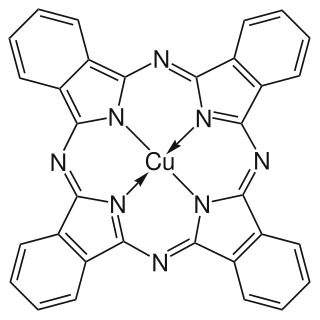
Copper phthalocyanine (CuPc), also called phthalocyanine blue, phthalo blue and many other names, is a bright, crystalline, synthetic blue pigment from the group of dyes based on phthalocyanines. Its brilliant blue is frequently used in paints and dyes. It is highly valued for its superior properties such as light fastness, tinting strength, covering power and resistance to the effects of alkalis and acids. It has the appearance of a blue powder, insoluble in most solvents including water.
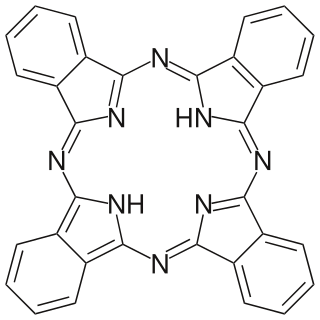
Phthalocyanine is a large, aromatic, macrocyclic, organic compound with the formula (C8H4N2)4H2 and is of theoretical or specialized interest in chemical dyes and photoelectricity.

South Point is a higher-secondary co-educational private school located in Kolkata, West Bengal and affiliated to Central Board of Secondary Education, consisting of three organisations – South Point School, South Point High School and South Point Education Society. The school operates in two shifts for all classes – Morning and Afternoon. The school opened in 1954, and was the first co-educational school in Kolkata. Higher Secondary (10+2) education was introduced in 1960. Initially operation as a single unit, the school split into two buildings with the high school shifting to Ballygunge Place in 1980. It is claimed to be the only school in Kolkata to have a Nobel Laureate as an alumnus. It is regarded by many as one of the best schools in Kolkata.

Porphine or porphin is an organic compound of empirical formula C20H14N4. It is heterocyclic and aromatic. The molecule is a flat macrocycle, consisting of four pyrrole-like rings joined by four methine bridges, which makes it the simplest of the tetrapyrroles.

The International Federation of Automatic Control (IFAC), founded in September 1957 in France, is a multinational federation of 49 national member organizations (NMO), each one representing the engineering and scientific societies concerned with automatic control in its own country.

St. Lawrence High School is a private Catholic primary and secondary school for boys, located in Kolkata, West Bengal, India. It is among the top 5 schools in Kolkata. The school was founded in 1810 and run by the Jesuits, initially in Baithakhana, Sealdah, as an elementary school which came to be known as St. John Chrysostom School. It was renamed in January 1937 by Fr. Lawrence Rodriques, S.J. as St. Lawrence High School. The school caters for approximately 3,000 students.
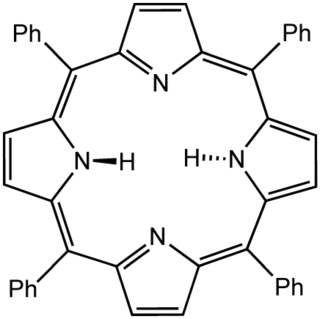
Tetraphenylporphyrin, abbreviated TPP or H2TPP, is a synthetic heterocyclic compound that resembles naturally occurring porphyrins. Porphyrins are dyes and cofactors found in hemoglobin and cytochromes and are related to chlorophyll and vitamin B12. The study of naturally occurring porphyrins is complicated by their low symmetry and the presence of polar substituents. Tetraphenylporphyrin is hydrophobic, symmetrically substituted, and easily synthesized. The compound is a dark purple solid that dissolves in nonpolar organic solvents such as chloroform and benzene.

Published by World Scientific, the Handbook of Porphyrin Science: With Applications to Chemistry, Physics, Materials Science, Engineering, Biology and Medicine is a multi-volume reference set edited by scientists Karl Kadish, Kevin Smith and Roger Guilard. The first ten volumes were published in 2010 and the next ten are expected to be published in 2011.
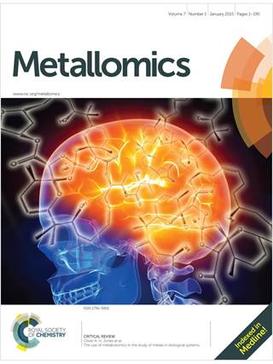
Metallomics is a monthly peer-reviewed scientific journal covering the growing research field of metallomics. The journal's scope is aimed at "elucidating the identification, distribution, dynamics, role and impact of metals and metalloids in biological systems". It is published by the Royal Society of Chemistry. The executive editor is Jeanne Andres, while the current chair of the editorial board is David Giedroc at Indiana University Bloomington.

Halina Abramczyk is a Polish physicist and chemist, a specialist in molecular spectroscopy and laser spectroscopy professor employed at the Lodz University of Technology.
Tavarekere Kalliah Chandrashekar is an Indian bioinorganic chemist and a former director of the National Institute for Interdisciplinary Science and Technology, a CSIR subsidiary. He was appointed the director of the National Institute of Science Education and Research, Bhubaneswar where he continues as a senior professor at the department of chemical sciences. He is known for the discovery of novel macrocyclic systems and is an elected fellow of the Indian National Science Academy, National Academy of Sciences, India and the Indian Academy of Sciences. The Council of Scientific and Industrial Research, the apex agency of the Government of India for scientific research, awarded him the Shanti Swarup Bhatnagar Prize for Science and Technology, one of the highest Indian science awards, in 2001, for his contributions to chemical sciences.
Mahdi Muhammad Abu-Omar is a Palestinian-American chemist, currently the Duncan and Suzanne Mellichamp Professor of Green Chemistry in the Departments of Chemistry & Biochemistry and Chemical Engineering at University of California, Santa Barbara.

Karl M. Kadish is an American chemist. He is currently Hugh Roy and Lillie Cranz Cullen University Professor at the University of Houston.

Roger Guilard is a French chemist. He is a professor of chemistry at the University of Burgundy in Dijon, France where he is a member of the Institute of Molecular Chemistry of the University of Burgundy.
Michael J. Therien is the William R. Kenan, Jr. Professor of Chemistry at Duke University.
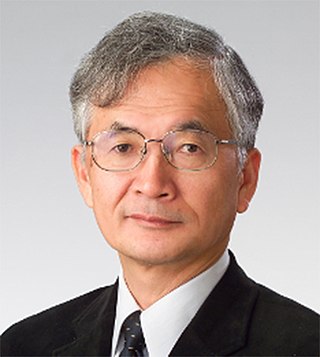
Atsuhiro Osuka is a research professor of organic chemistry in the Department of Chemistry, Graduate School of Science, Kyoto University (Japan). He is recognized in the fields of porphyrinoid chemistry for his works in extended π-electron systems and its tunable aromatic behaviors.
Timothy D. Lash is an English-born chemist. He moved to the United States and began teaching at Illinois State University in 1984. Lash is known for his contributions to synthetic porphyrin chemistry.
Frances Ann Walker was an American chemist known for her work on heme protein chemistry. She was an elected fellow of the American Association for the Advancement of Science and the American Chemical Society.
Dirk M. Guldi is a German chemist, academic, and author. He is an adjunct professor at Xi'an University of Science and Technology and Huazhong University of Science and Technology, a partner investigator at the Intelligent Polymer Research Institute at the University of Wollongong, as well as a full professor at Friedrich-Alexander-University Erlangen-Nürnberg.













